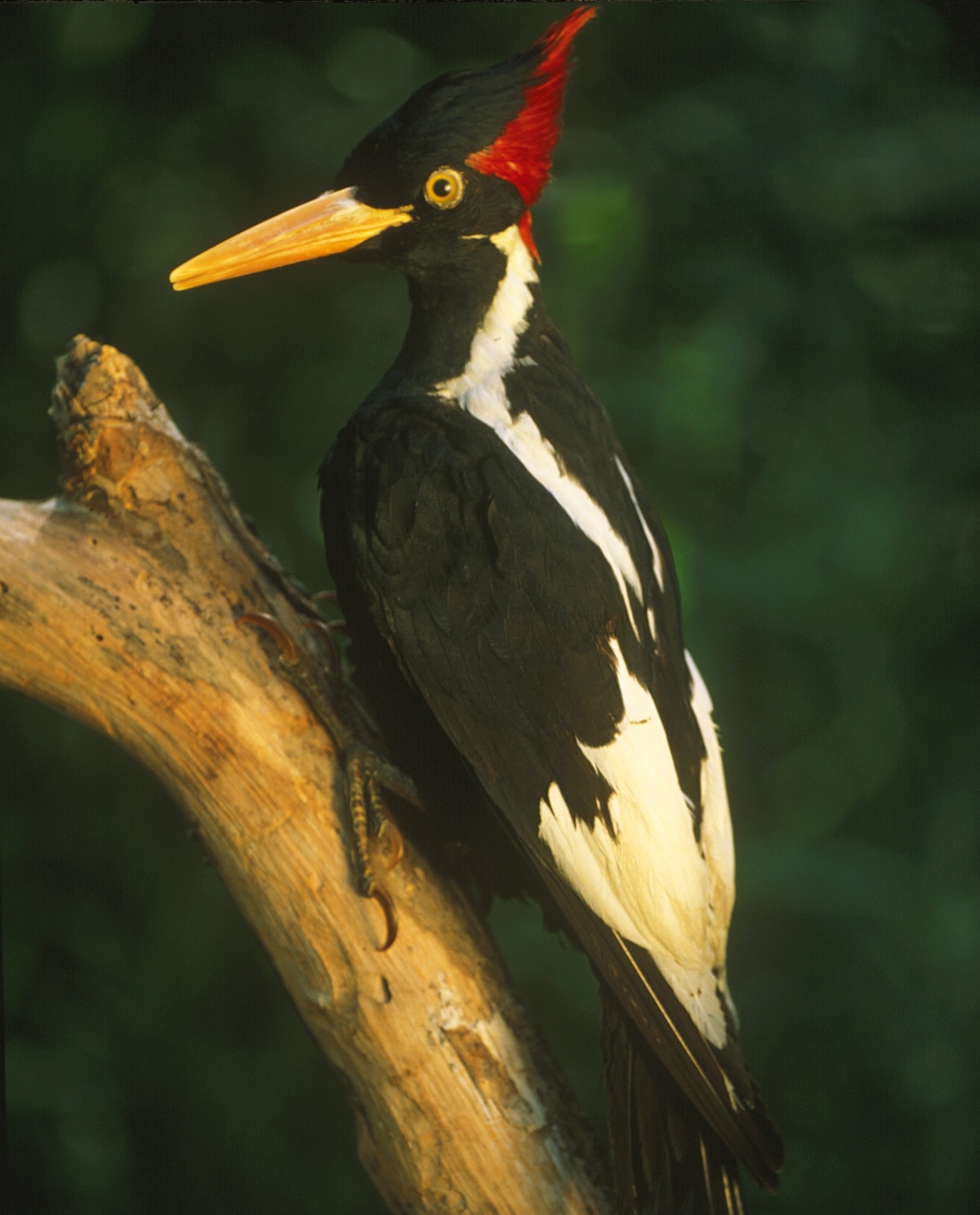Not Extinct After All: First ‘Widely Accepted Sighting’ of Ivory-Billed Woodpecker Since 1944

 Why you can trust us
Why you can trust us
Founded in 2005 as an Ohio-based environmental newspaper, EcoWatch is a digital platform dedicated to publishing quality, science-based content on environmental issues, causes, and solutions.
With a call that has been described as that of a “tin trumpet” and making a double tap sound with its long bill, the ivory-billed woodpecker (Campephilus principalis) is the third largest woodpecker in the world and the largest north of Mexico, according to All About Birds. The elusive woodpecker had apparently last been seen in the Big Woods of eastern Arkansas in 2004, the Arkansas Democrat-Gazette reported, but it was still determined to be extinct by the U.S. Fish and Wildlife Service (FWS) last year.
The beautiful black and white, tree-dwelling ivory-billed woodpecker — males have a bright crest that looks like a red hat — was declared extinct after not having had a “widely accepted sighting” since 1944, The Guardian reported.
Though they once made old-growth forests from the Ohio River Valley down into Florida and Cuba their home, populations shrunk in the 1800s due to hunting and habitat destruction.
However, it appears that the FWS spoke too soon when they determined there were no more ivory-billed woodpeckers in existence. A research team from the National Aviary and Project Principalis went on a years-long search for the woodpecker and, using trail cameras and drone videos, accumulated evidence that at least three ivory-billed woodpeckers are living in the bottomland forests of the researchers’ study site in Louisiana, the National Aviary said. The research has yet to be peer-reviewed, reported The Guardian.
The team’s paper, “Multiple lines of evidence indicate survival of the Ivory-billed Woodpecker in Louisiana,” was preprinted by bioRxiv.
Director of conservation at the National Aviary in Pittsburgh Steven C. Latta, who led the search and was co-author of the paper, observed an ivory-billed woodpecker fly.
“It flew up at an angle and I watched it for about six to eight seconds, which was fairly long for an ivory-billed woodpecker,” Latta said, as The Guardian reported. “I was surprised. I was visibly shaking afterwards. You realize you’ve seen something special that very few people had the opportunity to see.”
Once relatively common, the ivory-billed woodpecker feeds on insects in the bark of recently dead trees.
After having been hunted for decades, the woodpecker became understandably wary of people, and avoided them by flying high into the trees, said biologist at Auburn University Geoffrey Hill, who participated in a search for the ivory-billed woodpecker in Florida in 2005.
“No one has held a camera and got a picture of one in years because it’s a scarce bird in tough swampy habitat and they don’t want people close to them because they’ve been shot at for 150 years,” Hill said, as reported by The Guardian.
Latta said that the size and markings in the photos of the bird recorded by the researchers indicated that it was an ivorybill and not another type of woodpecker.
“It reinforced to me that, yes, this bird does exist and left me feeling a sense of responsibility to protect it for the future,” said Latta, as The Guardian reported.
Subscribe to get exclusive updates in our daily newsletter!
By signing up, you agree to the Terms of Use and Privacy Policy & to receive electronic communications from EcoWatch Media Group, which may include marketing promotions, advertisements and sponsored content.

 233k
233k  41k
41k  Subscribe
Subscribe 



